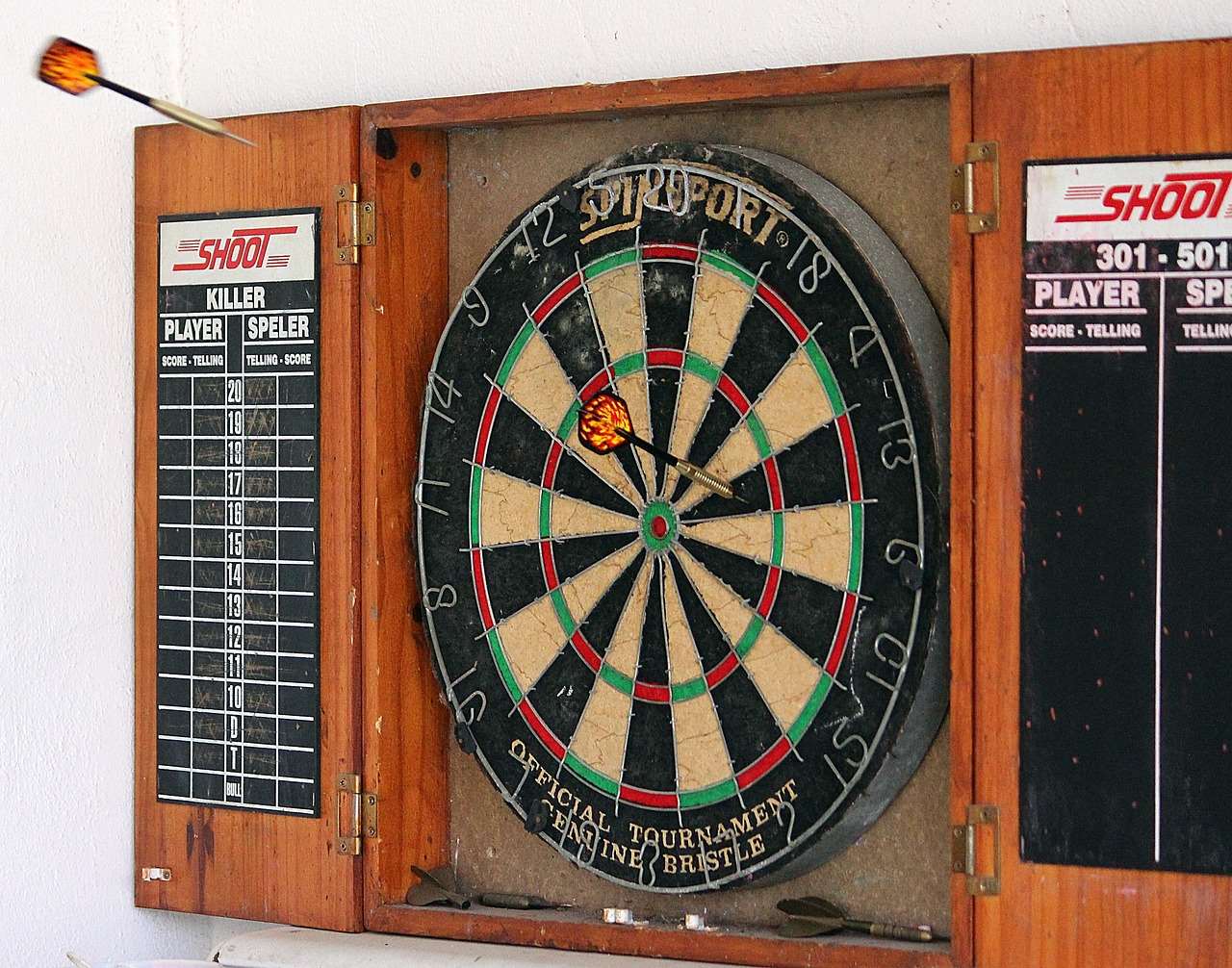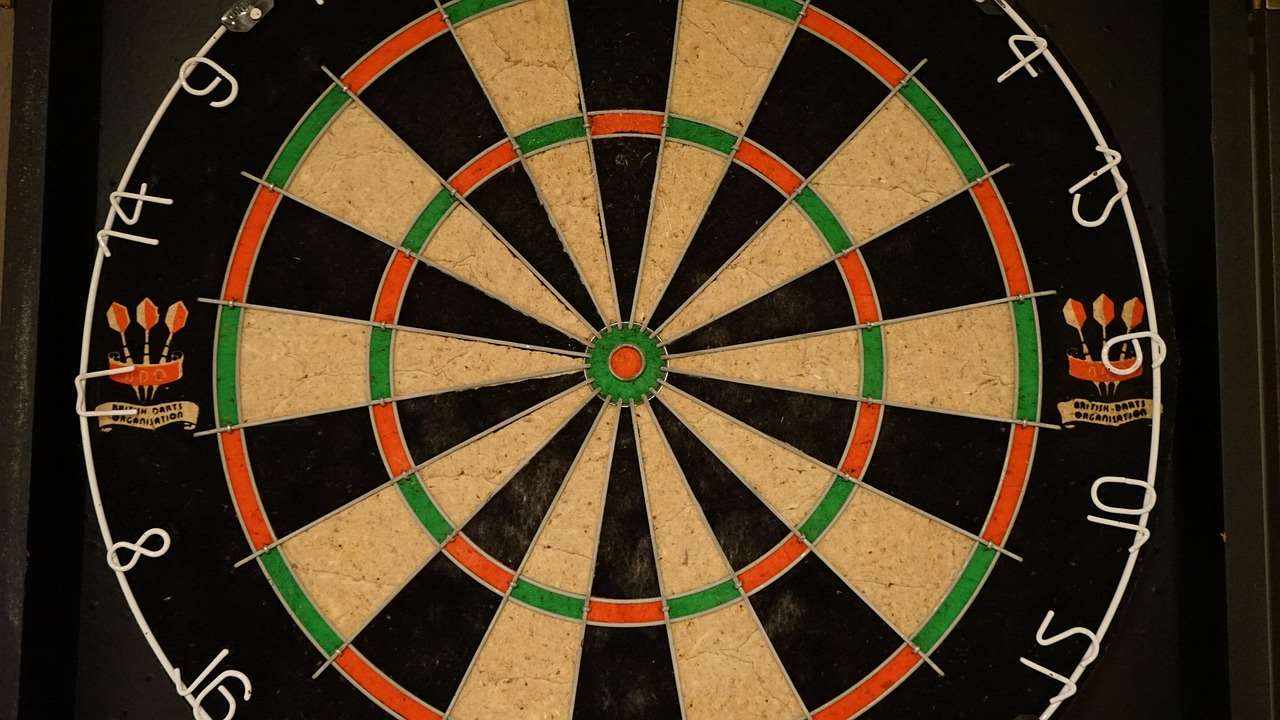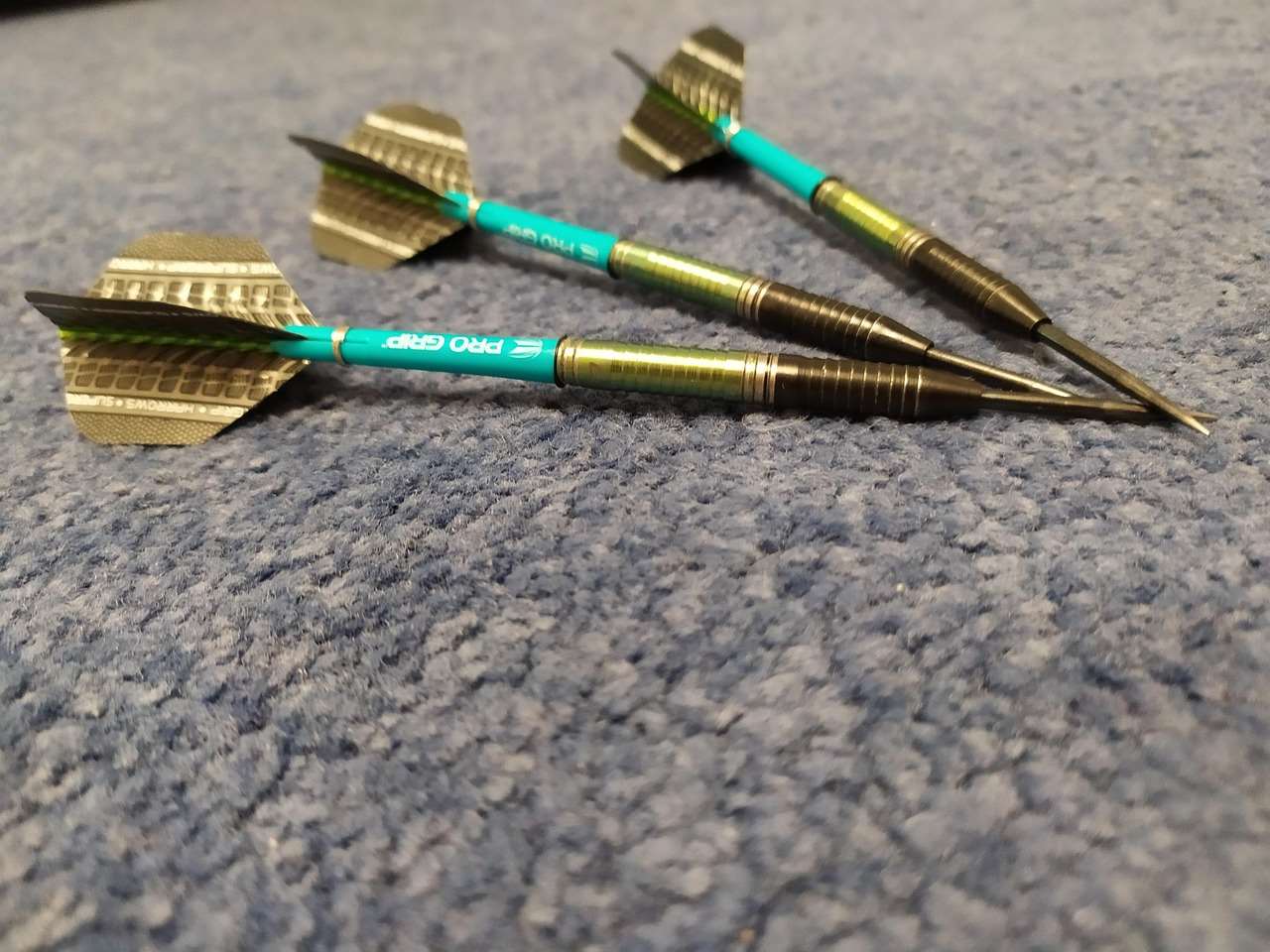Mastering darts grip and release is fundamental to consistent accuracy; it’s about finding what works best for *you* and refining it through practice. This article will guide you through various grip styles, release techniques, and common errors, helping you develop a repeatable and effective throw.
⚠️ Still Using Pen & Paper (or a Chalkboard)?! ⚠️
Step into the future! The Dart Counter App handles all the scoring, suggests checkouts, and tracks your stats automatically. It's easier than you think!
Try the Smart Dart Counter App FREE!Ready for an upgrade? Click above!
Understanding the Importance of Darts Grip and Release
The darts grip and release are arguably the most crucial elements of a successful throw. A consistent grip ensures the dart is held the same way each time, promoting uniformity in your throw. Similarly, a clean release allows the dart to travel smoothly and predictably toward the target. Neglecting either aspect can lead to inconsistent scores and frustration.
Why Consistency Matters
In darts, as in many sports, consistency is king. A slight variation in your grip or release can significantly alter the trajectory of the dart. By establishing a reliable darts grip and release, you minimize these variations, allowing you to focus on aiming and strategy. You can even explore tools such as a darts score reader to track your progress and identify areas for improvement.
The Psychological Aspect
Beyond the physical mechanics, the darts grip and release also impact your mental game. A confident grip and smooth release can boost your self-assurance, while uncertainty can lead to anxiety and poor performance. By mastering these techniques, you’ll develop a sense of control that translates to better overall play.

Exploring Different Darts Grip and Release Styles
There’s no single “correct” way to grip and release a dart. The ideal technique depends on individual factors such as hand size, finger length, and personal preference. However, understanding different styles can help you find what works best for you. It’s also important to understand darts database if you play competitively.
Common Grip Styles
- The Two-Finger Grip: This grip involves holding the dart primarily between the thumb and one finger (usually the index finger). It’s a simple grip that offers good control but may lack power for some players.
- The Three-Finger Grip: This is perhaps the most popular grip style, using the thumb and two fingers (typically the index and middle fingers) to hold the dart. It provides a balance of control and power.
- The Four-Finger Grip: This grip utilizes the thumb and three fingers, offering maximum stability. However, it can sometimes restrict the fluidity of the release.
- The Pencil Grip: As the name suggests, this grip mimics how you would hold a pencil. It’s a more relaxed grip that can promote a smoother release, but it might not provide as much control as other styles.
Release Techniques
- The Push Release: This involves pushing the dart forward with a smooth, controlled motion. It’s often favored by players who prioritize accuracy over power.
- The Flick Release: This release utilizes a flick of the wrist to impart extra velocity to the dart. It can be effective for generating power but requires precise timing and control.
- The Straight Release: Aim for a straight, fluid motion with minimal wrist action. This approach promotes consistency and can lead to better accuracy over time.
Fine-Tuning Your Darts Grip and Release
Once you’ve experimented with different grip and release styles, it’s time to fine-tune your technique. This involves paying attention to specific details and making adjustments based on your individual needs.
Grip Pressure
Finding the right grip pressure is crucial. Holding the dart too tightly can create tension and restrict your release, while holding it too loosely can lead to a loss of control. Experiment with different levels of pressure until you find a balance that feels comfortable and secure. Many players also benefit from using a darts score card template to keep track of performance during these refinements.
Finger Placement
The placement of your fingers on the dart can significantly impact its trajectory. Experiment with different finger positions to find what gives you the best control and feel. Pay attention to how the dart feels in your hand and how it responds to your release.
Release Point
The point at which you release the dart is critical for accuracy. Ideally, you should release the dart at the peak of your throwing motion, when your arm is fully extended. Practice releasing the dart at the same point each time to promote consistency. Remember that factors such as the darts next bus schedule shouldn’t affect your focus during practice.

Common Mistakes in Darts Grip and Release (and How to Fix Them)
Even experienced dart players can fall into bad habits. Identifying and correcting these common mistakes can significantly improve your game.
Gripping Too Tightly
As mentioned earlier, gripping the dart too tightly is a common mistake. This creates tension in your hand and arm, hindering your release and reducing accuracy. Solution: Consciously relax your grip and focus on holding the dart with just enough pressure to maintain control.
Inconsistent Release Point
Releasing the dart at different points in your throwing motion leads to inconsistent results. Solution: Practice your release point diligently. Use visual cues, such as a mark on the wall, to help you release the dart at the same spot each time. For tracking your game, you might consider a Darts scorekeeper app.
Excessive Wrist Action
While a slight wrist flick can add power, excessive wrist action can compromise accuracy. Solution: Minimize wrist movement and focus on using your arm and shoulder to generate power. Keep your wrist relatively stable throughout the throw.
Rushing the Throw
Rushing your throw can lead to a sloppy grip and release. Solution: Take your time and focus on your pre-throw routine. Establish a consistent stance, grip, and aiming point before initiating your throw. Even exploring unusual games like bull shot darts require a measured approach.

Drills and Exercises for Improving Your Darts Grip and Release
Regular practice is essential for developing a consistent darts grip and release. Incorporate these drills and exercises into your training routine to accelerate your progress.
The Grip Consistency Drill
This drill focuses on developing a consistent grip. Before each throw, consciously check your grip to ensure your fingers are in the correct position and that you’re applying the appropriate amount of pressure. Repeat this process before every throw, even during casual games.
The Release Point Drill
This drill helps you develop a consistent release point. Stand a few feet away from the dartboard and focus on releasing the dart at the same point in your throwing motion each time. Use a visual cue, such as a mark on the wall, to help you maintain consistency.
The Target Practice Drill
This drill combines grip and release practice with target accuracy. Aim for specific targets on the dartboard while consciously focusing on maintaining a consistent grip and release. Vary your targets to challenge yourself and improve your overall game.

Advanced Techniques for Darts Grip and Release
Once you have mastered the fundamentals, you can explore more advanced techniques to further refine your darts grip and release.
Analyzing Professional Players
Observe how professional dart players grip and release their darts. Pay attention to their finger placement, grip pressure, and release point. While you shouldn’t try to copy their techniques exactly, you can learn valuable insights that can help you improve your own game. Try to watch the the darts christmas match for a different take.
Experimenting with Different Darts
The type of darts you use can also affect your grip and release. Experiment with different dart weights, shapes, and materials to find what feels most comfortable and gives you the best results. A slightly different barrel texture could dramatically change your confidence. Furthermore, understanding what is dart flight transparent can offer insights into dart aerodynamics and overall performance.
Mental Visualization
Before each throw, visualize yourself executing a perfect grip and release. This can help you program your subconscious mind to perform the desired action. Mental visualization is a powerful tool that can enhance your overall performance.

Conclusion: Mastering Darts Grip and Release for Peak Performance
Mastering the darts grip and release is a journey that requires patience, dedication, and consistent practice. By understanding different grip styles, release techniques, and common errors, you can develop a repeatable and effective throw that will significantly improve your game. Remember to experiment with different techniques, fine-tune your approach, and stay focused on continuous improvement. With consistent effort, you’ll be well on your way to achieving your full potential as a dart player.
Now, take what you’ve learned here and put it into practice! Head down to your local pub or set up your dartboard at home, and start refining your darts grip and release today. Good luck, and may your darts fly true!
Hi, I’m Dieter, and I created Dartcounter (Dartcounterapp.com). My motivation wasn’t being a darts expert – quite the opposite! When I first started playing, I loved the game but found keeping accurate scores and tracking stats difficult and distracting.
I figured I couldn’t be the only one struggling with this. So, I decided to build a solution: an easy-to-use application that everyone, no matter their experience level, could use to manage scoring effortlessly.
My goal for Dartcounter was simple: let the app handle the numbers – the scoring, the averages, the stats, even checkout suggestions – so players could focus purely on their throw and enjoying the game. It began as a way to solve my own beginner’s problem, and I’m thrilled it has grown into a helpful tool for the wider darts community.